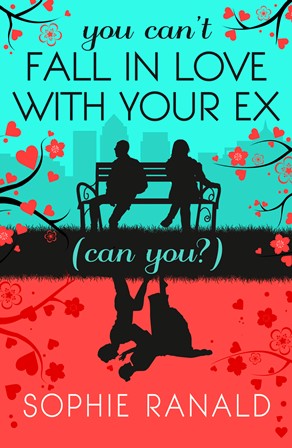I’ve done it four times now, but the wait while my agent reads my manuscript for the first time has become no less agonising than it was three years ago, when I first received that longed-for “request for full”. I check my emails compulsively. I read and reread my completed novel, spotting typos and literals that make me cringe. And when at last the call comes, the relief that she likes the book is no less giddy than it was the first time.

This time, though, the comment from my agent (the wonderful Peta Nightingale at LAW) that absolutely delighted me came not after she’d read my novel, You Can’t Fall in Love With Your Ex (Can You?), but after she’d read the acknowledgements, which I sent her a week or so before publication. In amongst thanking her, my cover designer, friends, family and cat, I paid tribute to the sources I’d used to help me understand the world of classical ballet, of which I’d had no understanding or experience at all before beginning the novel.
“I honestly thought you must have been a dancer yourself,” Peta said. I was – and still am – absolutely delighted by this, not because it says anything in particular about my gifts as a writer, but because it means that all the hours and hours I put into research were well spent.
The advice that’s always given to aspiring novelists is: “Write about what you know.” It’s been ascribed to Hemingway, Twain, Faulkner and any number of other great novelists and, no matter whether any of them actually ever said it, it’s sound enough advice. How could one write about love, jealousy, fear or friendship without ever having experienced them?
But these are universal parts of being human. Pretty soon, any novelist will find themselves writing about something they know nothing at all about - and that’s where research comes in. I can’t remember when or why I decided that Laura, the heroine of You Can’t Fall in Love With Your Ex (Can You?), was a former ballerina, but once the decision was made, I realised I had some serious homework to do.
When I’m not writing novels, I write journalism, so the process of research is familiar to me. You read stuff, you interview people who know the subject, you get your copy checked. If you know nothing whatsoever about the subject you’re researching, you hope you’ll get away with it.
So, when I set about imagining Laura’s life as a professional dancer, I followed the same approach I would have done if I was researching an article for a newspaper or a magazine.
I read, a lot. Pointe magazine, Darcey Bussell’s autobiography, memoirs and novels about dancers. It was helpful to discover that the daily routine from one ballet company to the next actually varies very little: morning class, rehearsals in the afternoon, evening performances, sessions with the physiotherapist and podiatrist. (A podiatrist once told me that many of his patients are ballerinas, and that they very commonly bite their toenails to the quick, because they’re flexible enough to be able to and because they have a high tolerance to pain. I didn’t put this in the novel – I didn’t want to disgust my readers!)
Of course, the internet is an incredibly rich resource for writers. The Royal Ballet’s website has hours of video showing classes, rehearsals and performances – I watched it all. I watched videos of Swan Lake and Sleeping Beauty so I could pinpoint the moments in the ballet when specific scenes in my novel took place. I watched tutorials describing how to break in pointe shoes. I Googled common injuries dancers sustain and how they’re treated.
And finally, I wanted to experience ballet for myself, at the most basic level – dipping a toe into it, so to speak – so I signed up for a term of adult beginner classes at Trinity Laban Conservatoire of Music and Dance. This taught me several things. First, that the routine of a ballet class is the same at its most basic level as it is for professional dancers (I joined a tour of the Royal Opera House and saw a class in progress, just to make sure). Second, that ballet is seriously hard. And third, that I, with my two left feet, hopeless co-ordination and zero musical ability, could never, ever have been a dancer. But still, I felt confident that I knew the world well enough to write about it.
In journalism, of course – with a few notable exceptions – accuracy is sacrosanct. But fiction is different. I attended a talk many years ago by the best-selling thriller writer Lee Child, and he said something that has stuck in my mind ever since. One of the audience asked a question along the lines of: “You write in such detail about the US military, but you’re English and you never served in the army. Was your father a soldier? How do you know this stuff?”
Lee’s response was: “I don’t. I make most of it up. You don’t have to be accurate as a novelist; you have to be convincing.”
I’m sure that at some point, someone who knows far more about ballet than I do will read my novel and point out howling inaccuracies. But – for now – it seems to be convincing readers, and that’s good enough for me.
Sophie Ranald is the author of four romantic comedies, which have reached the top 10 on Amazon UK and been published in Germany, Italy, Brazil and the Czech Republic. She also writes for magazines and online about food, fashion, running and a host of other subjects she knows nothing at all about. Follow her on Twitter @sophieranald
Comments